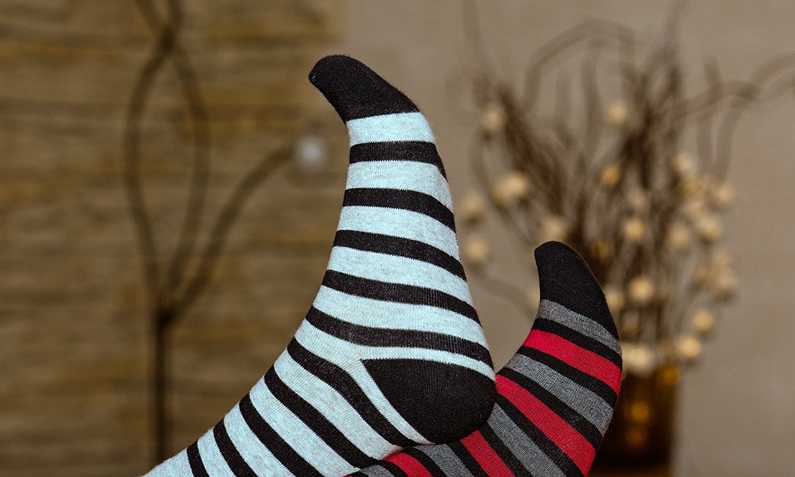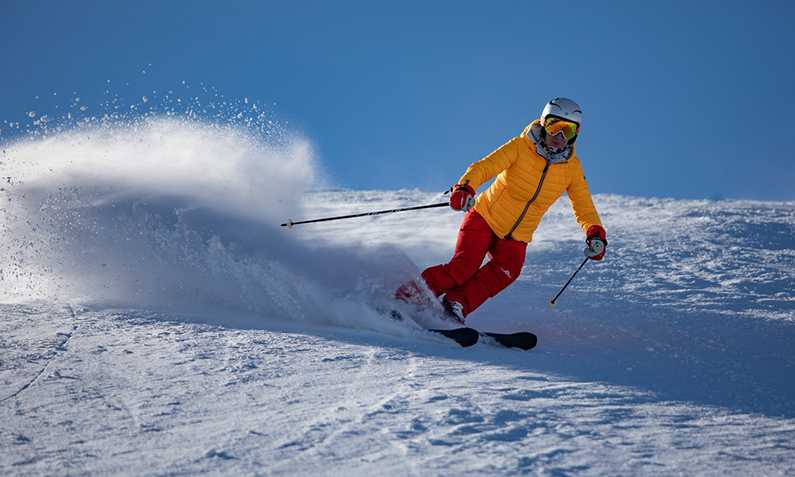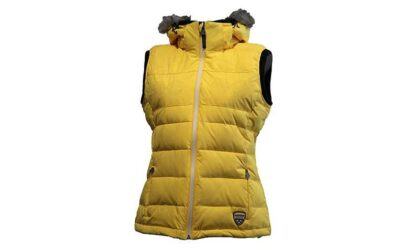If you want to buy heated socks and you don’t know how to choose heated socks that will be best meet your needs, in this guide, you will find the most comprehensive information on how to choose the best heated socks that will perfectly protect your feet from the cold whether you are at home or doing some outdoor activity in very cold conditions.

Winter is a time when most of us enjoy winter sports such as running, hiking, skiing, sledding, snowboarding, and many other sports. But there are also a number of people enjoying staying in their warm homes near their fireplaces and watching the Winter Olympics.
But unlike them, we who are enthusiastic about skiing and other winter sports often face one of the biggest problems, and that is having cold feet. In order to solve the problem of cold feet, usually, before we leave our home, we put a few pairs of socks on our feet and also warm our ski boots.
In fact, this is not the most effective way and it does not completely solve the problem of cold feet, especially when we ski or do some other sports activity in winter when the temperatures go a few degrees below zero.
We have always wondered, what is the most effective way to protect our cold feet? Nowadays, you can easily solve this problem simply by buying a pair of heated socks. However, the problem is how to choose the best heated socks that will meet your needs while sporting in extreme winter conditions.
With the intention of facilitating your choice of heated socks, here you can read my compression guide on how to buy the best-heated socks.
RELATED: Best Heated Ski Boots
What is the Best Way How to Choose Heated Socks?
What is the Difference Between Regular and Heated Socks?
At first, glance when you look at the heated socks, they are no different from the regular socks you wear every day. Both regular and heated socks are usually made of the same materials such as merino wool, cotton, and synthetic fabric.
But what makes heated socks different from regular socks is the presence of a system of heating elements that are most often located in the toes, heels or soles. You can also find heated socks where the heating elements cover the entire area from your lower leg to the toes. This means that your feet are completely protected from freezing and frostbite.
These heating elements are usually made of high-quality carbon fiber and they are connected to batteries from where they receive electricity, which is then converted into heat to warm your feet.
The batteries used in heated socks can be disposable and reusable, which can be recharged hundreds of times. There are several types of batteries used in heated socks, such as AA, NiMH, and Lithium-Ion batteries. The most economical and efficient solution is to use rechargeable batteries such as Lithium-Ion batteries that are very durable and provide 500 or more charges.

Which Materials are Most commonly Used in the Production of Heated Socks?
You need to know that heated socks, in addition to keeping your feet warm, are also designed to be comfortable to wear and to remove sweat from your feet while doing sports.
In most heated socks, a combination of wool and cotton is used as the dominant materials, along with impurities of a certain percentage of silk, nylon, elasthan, spandex, polyester, and polypropylene. This is done in order to get heated socks that will offer top performance when it comes to durability, comfort, flexibility, and protection from many external influences, especially from the cold.
Here is a brief description of the most commonly used materials in heated socks.
Cotton: A number of heated socks in their production, in addition to synthetic materials, cotton is used as the dominant fabric. The advantage of heated socks that mostly use cotton is that they are very comfortable, durable, hypoallergenic, offer good insulation in cold periods, and above all, as the most important they are not very expensive.
But the downside to heated cotton socks is that they easily lose their original shape. It is also good to know that they easily absorb the sweat from your feet, which on the one hand is good but on the other hand the sweat that is absorbed by the cotton together with the heat generated by the heating elements create ideal conditions for bacteria to multiply and create fungal infections.
Merino Wool: Heated socks, which use mostly wool, offer tremendous comfort, flexibility, and luxury, and are actually one of the most expensive socks you can find. Well-known companies that produce luxury heated socks are Lenz, Hotronic, and Volt.
When you have sports activities in the winter, warm socks made of merino wool make you feel very comfortable, they absorb moisture, they are thermostatic, they keep your feet dry, and do not create friction that greatly protects your feet.
They are ideal for skiing and hiking at very low temperatures. But you should be careful not to soak them in water so as not to damage the heating elements and they also need to dry for a long time.
Synthetic Fiber: Characteristic of synthetic fibers is that they retain heat, are very light, soft, and very durable. Heated socks, which use synthetic fibers the most, are breathable, have excellent moisture absorption and also they can repel the moisture. They also have anti-bacterial properties.
Silk: Silk, like merino wool, is also used to make premium heated socks. They are very flexible, comfortable, offer excellent insulation but still, they do not have much durability. For making heated socks, silk is most commonly used in combination with spandex, merino wool, and nylon.
What Types of Batteries Are Used in Heated Socks?
It is obvious that the heating system of heated socks to deliver heat has its own source of electricity. In fact, heated socks are always powered by batteries that are connected via a special wire system.
As I mentioned earlier in this guide, there are several types of batteries used in heated socks, such as the disposable classic AAA and AA Alkaline, or rechargeable batteries such as NiMH (nickel-metal hydride battery), Lithium-Ion batteries.
It is obvious that rechargeable batteries are more practical and also more efficient. They last much longer than AAA and AA alkaline batteries and have the ability to charge up to several hundred times, which means they can be used for several seasons. This tells you that using rechargeable batteries will save you a lot of money.
With a single charge, rechargeable batteries can provide enough power, so the heating elements can deliver heat from 6 to 20 hours maximum. How long a single charge battery lasts, will depend on how you use the heated socks, ie which heating mode you use and for how long.
You will be able to recharge the rechargeable batteries with the help of a USB charger that you will get in a package along with the heated socks. Otherwise, the batteries are housed in specially designed pockets that are usually located on the top of the socks.
More than One Heating Mode
One of the major advantages of using heated socks is that they offer more than one heating mode.
In fact, most heated socks offer three heating modes such as low, medium, and high. But some of the premium brands such as Hotronic offer high-end heated socks with even 4 heating modes on the market. As the most famous example of high-end heated socks that offers 4 different heating modes is the Hotronic XLP One Heated Socks.
Multiple heating modes give you a lot of freedom in managing the heat from the heating elements and allow you to choose the ideal heat that needs to be delivered to your feet according to your needs at some point.

Foot Coverage
Usually, heated socks are designed to cover the entire foot to the knee up or to the middle calf. This means that these socks are not only a great choice for winter sports enthusiasts, but also for winter mountaineers, hunters and fishermen.
Heated socks are usually thin and elastic, so you can wear them with all kinds of shoes of all sizes, from ordinary hiking boots, sneakers, to hiking boots, not just ski boots. Obviously, the more expensive the socks, the better the coverage and layout of the heating elements. But that doesn’t mean cheaper models have less coverage.
You Have Full Control Over the Heating System
Temperature control in these heated socks can be in three ways:
1. Controlling the Temperatures on the Battery Packs Themselves:
So the first method for switching on and off as well as for managing the temperatures of the heated socks is performed manually. These controls are located on the battery pack itself. The battery pack is usually placed sideways on top of the heated socks.
This means that whenever you need to select the required heating mode you will need to briefly stop your activities and bend down to press the controls and it often happens that you need to take off your boots whether you wear ski boots or hiking boots. The same process applies when you want to activate the heating system, ie turn on or off the heated socks.
Maybe this method is effective in some way but not practical. Often this method can disrupt your enjoyment of sports activities. But if you intend to use the heated socks only indoors, manual handling should not be a problem at all. You will often find this method of temperature management in the cheaper heated socks of the lower class.
2. Temperature Control via Wireless Controller:
Most of the heated socks, in addition to the manual control located on the battery pack itself, also offer wireless control.
You can place this controller in one of your pockets where you will have easier access or you can attach it to any part of your outerwear so that the controller will always be within your reach at any time when you want to change the heating of your feet.
This is a much more practical and efficient method of managing heating modes as well as switching on and off the heated socks themselves.
3. Temperature Control via Bluetooth Technology:
Also, in addition to the two methods mentioned earlier, your heated socks can be controlled via Bluetooth from your Smartphone with an application that is specially designed for this purpose. You are free to download this application online anytime.
This method is much more advanced, more efficient, and easier to use and is generally characterized only for heated socks of the highest class. You should also know that heated socks that use Bluetooth technology are one of the most expensive products.
The most famous high-end brands that most implement Bluetooth technology in their products are Lenz, Hotronic, Mobile Warming, and Volt.
Can I Wash Heated Socks in Washing Machine?
Normally, like any clothing, heated socks should be washed after each wearing. All types of heated socks can be washed by hand. Some high-end manufacturers, such as Hotronic and Lenz, claim that their heated socks can be washed in a washing machine in a special mesh bag that comes with the heated socks.
Still, despite these claims, I highly recommend that you do not wash heated socks in the washing machine at all. Because the chances of damage to the heating elements as well as the wired system are high.
It is best to always wash heated socks by hand and carefully without too much squeezing or twisting. Always remember to remove the batteries before washing the heated socks so as not to damage them.
Always allow your socks to air dry after washing. I also don’t recommend drying them in a dryer so as not to damage the fabrics and wires woven into them. But if you think that will not be a problem, and then dry the socks in the dryer at your own risk.

What Activities Can I Do While Wearing Heated Socks?
Here are some of the activities you can do while wearing warm socks:
- Skiing
- Riding a motorcycle or bicycle
- Snowboarding in winter
- Hunting and Ice Fishing
- Walking with your friends
- Walking your dog
- Running in the winter
- Hiking in the woods
- Mountaineering
- Shoveling your doorway
- Travel to your workplace
- Ice skating
- Camping in the winter and many other activities.
What Are Your Options When Buying Heated Socks?
Heated socks today can be found in a variety of materials, sizes, and colors. Their thickness can range from thick that are specifically designed for outdoor work or hunting to thin ones that are ideal for skiing, running, hiking, and other winter sports.
There are also specially designed socks for people who have chronic cold feet and those who suffer from arthritis. But, always before deciding which type of heated socks are best for you, you should first consider why you want to buy heated socks and you need to consider many factors:
- Do you want to ski in very extreme winter conditions or do you just want to enjoy winter sports?
- Do you often go hunting or fishing?
- Do you need socks to keep your feet warm while clearing the snow in your yard?
- Do you need extra warming due to poor blood circulation in your legs?
- Do you enjoy long walks in the winter?
- Do you need heated socks whose batteries can last a very long time?
- What budget do you have at the moment?
These are just some of the few questions that need to be answered before making a final decision on which warm socks are best for you. For example, you do not need to buy expensive warm socks at all if you do not intend to play sports in very cold conditions. If you only need socks to keep your feet warm while you’re at home, then heated socks from the lower-class that are much affordable are a great option for you.
Thank you for stopping by and I hope that my guide really helped you to understand how to choose heated socks that will best suit you. In case if you have anything to add to my guide, please feel free to write down below into the comment box.




0 Comments